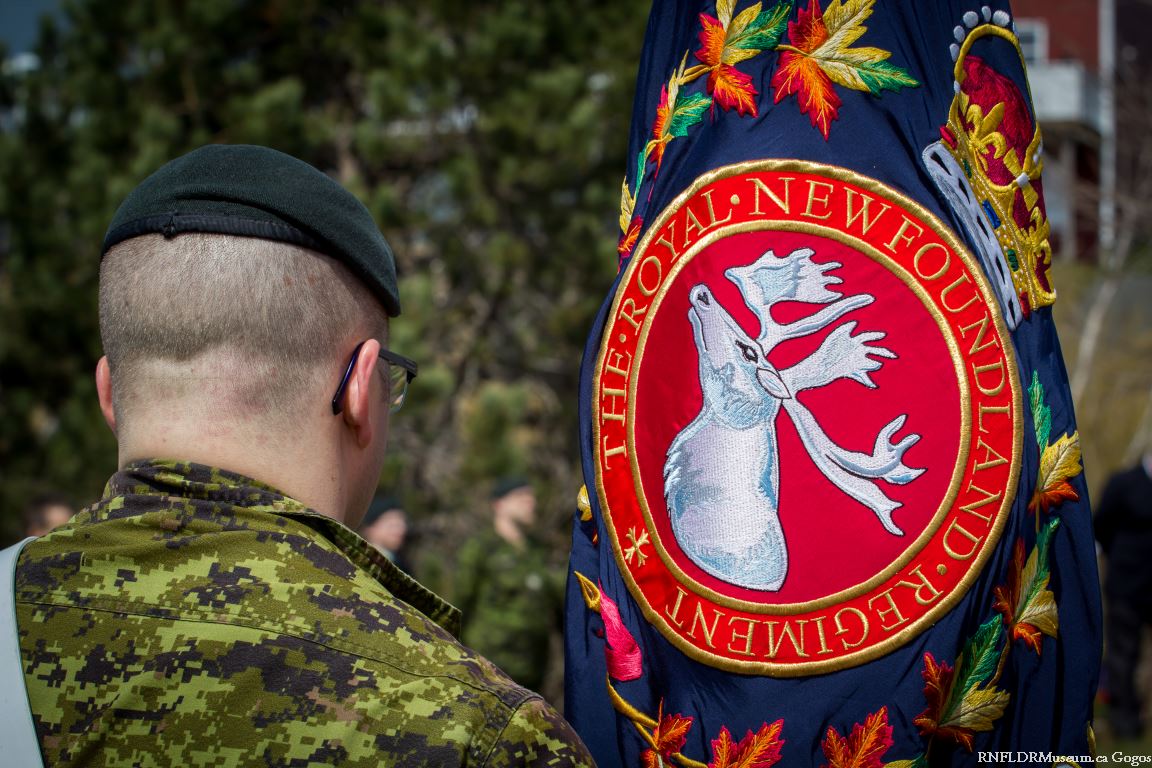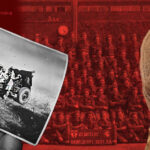
His Majesty’s Royal Newfoundland Regiment of Foot 1795-1802
The modern Royal Newfoundland Regiment can trace its beginnings to the first Royal Newfoundland Regiment which was formed on 25 April 1795, when Captain Thomas Skinner of the Royal Engineers, the man credited with designing the defence construction on Signal Hill, was given permission to raise a fencible infantry company consisting of six hundred men. The new regiment was called the Royal Newfoundland Regiment and consisted of a number of troops from the garrison as well as local volunteers. Recruiting was authorized at the rate of six guineas for each new recruit while officers were enlisted from other Regiments or from notables in the town. In terms of pay, clothing, arms and accouterments, the Regiment was to be on the same footing as His Majesty’s other infantry regiments in North America. A strength return for 1796 showed 35 officers and 615 men enrolled. Seventy seven of this number were stationed on Signal Hill, thirty three on South Side, five at ‘Quiddy Viddy’, and forty at Placentia. Severe shortages in accommodations at the existing town forts prompted the construction of additional barracks at both Fort William and Fort Townshend as well as on Signal Hill. In addition, the Regiment also began detailed plans to fortify Signal Hill by transporting guns to the face of the cliff below Gibbet Hill and by the construction of several shot furnaces for use by the batteries at Fort Frederick, Chain Rock Battery and Fort William.
In September 1796 the entire garrison took to Signal Hill to help ward off an anticipated French attack led by Admiral Richery, who was under orders from the Directory of Republican France, to seize English fishing interests in Newfoundland. Governor Wallace assembled the Royal Newfoundland Regiment, the Royal Newfoundland Volunteers and all able bodied men from the town to Signal Hill.
Tents were erected at the summit of the hill and at Fort Amherst to give the appearance of a large body of troops. The French fleet landed at Bay Bulls and burned all houses in the settlement but the sight of tents erected atop Signal Hill convinced the French of the folly of an assault on St.John’s so they departed for St.Pierre taking over 60 prisoners who were later released without incident.
In July 1797 Governor Wallace was replaced by the new Governor, Vice Admiral the Honourable William Waldergrave whose leadership was tested only one month later by a serious act of insubordination among the crew of the HMS Latonia docked in St.John’s harbour. On the 5th of August the crew of the Latonia refused the orders of their officers to go aloft. With the assistance of the Marines the ringleaders were thrown in irons before mutiny ensued. Governor Waldergrave visited the ship with the Grenadier Company of the Royal Newfoundland Regiment. He threatened to order the Gun Batteries on shore to fire upon the Latonia should further incident of mutiny occur. The Governor’s stern response ended the crisis without further incident.
Conditions in the Newfoundland station were harsh. The spoilage of winter food supplies stored at Signal Hill in 1797 and a fire at Fort William in 1798, which destroyed six barracks rooms and considerable stores of medicines, barrack bedding and ordnance stores, added to the privation endured by the rank and file. There were record numbers of desertions that year and open dissatisfaction among the troops. In May, 1799 Brigadier General William Skerret was appointed Commanding Officer of the troops in Newfoundland who were now answerable to the Commander in Chief in Nova Scotia. Skerret had only recently returned from leading troops tasked with ending the armed violence in Ireland.
In April, 1800 a plot was discovered among upwards of fifty members of the Royal Newfoundland Regiment who were sympathizers to the United Irish Movement, to desert their station and meet at the Powder Magazine behind Fort Townshend. Ten to twelve managed to leave Signal Hill before the alarm was sounded. Several others fled Fort Townshend but those at Fort William were prevented from leaving by a late night party hosted by Colonel Skinner.
Sixteen of the mutineers were captured and five of the organizers were ordered, by General Skerret, to be hanged on a makeshift gallows erected at the Powder Magazine which is currently Belvedere Street in St.John’s. The remainder were sent by prison ship to Halifax.
In July 1800, the rest of the Royal Newfoundland Regiment were transported to Halifax aboard the HMS Concord at the request of General Skerret who questioned the loyalty of his Regiment given that the troops were almost entirely of Irish descent. Only the Grenadier Company and the Light Infantry Companies of the Royal Newfoundland Regiment were kept in Newfoundland. In return the Duke of Kent sent the 66th Regiment of Foot to Newfoundland. The remainder of the mutineers were forced to march behind their own coffins en route to Fort George on Citadel Hill. Eight of the convicts were spared at the last moment and given life sentences and three more were summarily hanged in front of the entire garrison.

For the next two years the Royal Newfoundland Regiment provided garrison duties in Halifax. In March, 1802 with the signing of the Treaty of Amiens they were disbanded.




2 Comments
I thought the Newfoundland Regiment didn’t receive the right to be called Royal until after WW I but it is used right from the beginning in the article above.
The first Regiment formed in 1795 was granted the title Royal as was the second in 1803. In 1914 it was requested but turned down by the crown because the war had already started when the unit was reformed. However the crown relented and granted the title in 1917. It was the only regiment during the war to be granted the title during hostilities and was only the third time this has happened in the British Empire and was the last. A true testament to their actions and sacrifice during WWI. When the Regiment was reformed again in 1949 as a reserve infantry unit of the Canadian Army it was once again granted the title Royal.